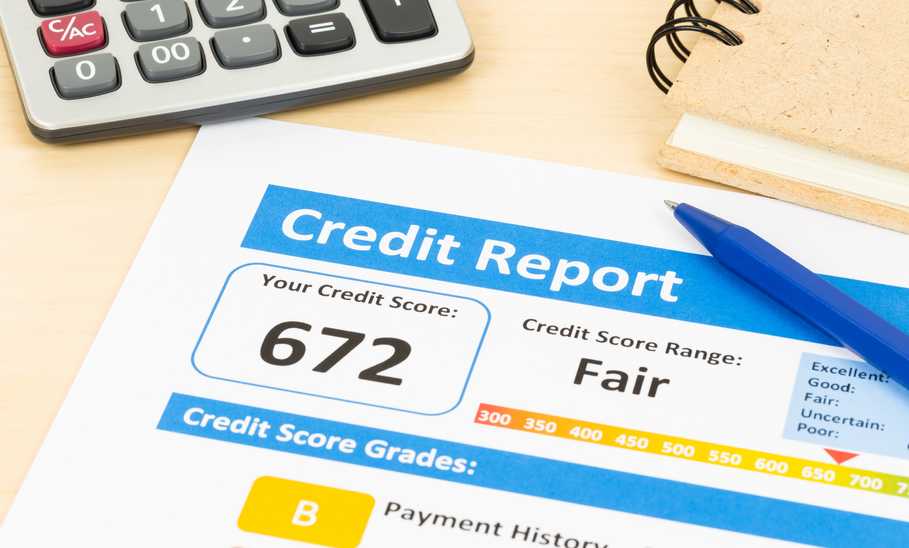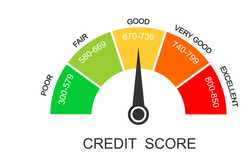What is a Fair Credit Score


Our evaluations and opinions are not influenced by our advertising relationships, but we may earn a commission from our partners’ links. This content is created by TIME Stamped, under TIME’s direction and produced in accordance with TIME’s editorial guidelines and overseen by TIME’s editorial staff. Learn more about it.
Your credit score is a progress report of how you manage credit. It helps banks to understand how risky you are as a borrower.

A “fair” credit score, also called “average,” is on the low end of the credit scoring model, representing scores between 580 and 669. Experian data shows that the average credit score in the U.S. is 714, which is significantly higher.
A fair score isn’t good enough to thrive in the world of credit. Let’s take a look at what you’ll get with fair credit and give you some ideas as to how you can increase your score.
Complicated as it sounds, you’ve got more than one “type” of credit score. The two most popular are FICO and VantageScore.
The credit score used by the overwhelming majority of lenders is issued by FICO. FICO considers five distinct elements of your credit when calculating your credit score:
| Factor | Weight |
|---|---|
Payment history | 35% |
Amounts owed | 30% |
Length of credit history | 15% |
Credit mix | 10% |
New credit | 10% |
VantageScore tends to be more commonly used when lenders perform a soft inquiry. For example, a bank may use your VantageScore to glance at your credit and see if you’re a good candidate for one of its credit cards. If you are, it may send you correspondence letting you know that you’re preapproved for a card. If you then decide to apply for that offer, the bank will perform a hard inquiry on your credit, which will appear on both scores for other lenders to see.
Your VantageScore is comprised of six elements:
| Factor | Weight |
|---|---|
Payment history | 40% |
Depth of credit | 21% |
Credit utilization | 20% |
Balances | 11% |
Recent credit | 5% |
Available credit | 3% |
Some VantageScore categories look quite different from FICO, but they’re nearly identical. The credit utilization, balances, and available credit categories are all calculated in FICO’s “amounts owed.” And your depth of credit is essentially just your length of credit history.
FICO and VantageScore also define credit score ranges differently. In some cases, your credit score may be “fair” with FICO but “poor” with VantageScore.
FICO’s credit score tiers are:
And VantageScore’s credit score tiers are:
As FICO is far and away the most widely used credit score by lenders, we’ll focus on its model rather than the one used by VantageScore throughout the rest of the article.
Also, note that lenders don’t necessarily approve you based on the score bucket where you fall. They likely have their own definitions. For example, Capital One defines fair credit as:
OR
The difference between fair credit and good credit can be as much as 159 points or as little as one point. Again, a fair credit score is between 580 and 669 and a good credit score is between 670 and 739.
Though these credit ranges live right next to each other on FICO’s credit score model, the chasm between fair credit and good credit is wide. For example, it can be the difference between the ability to qualify for a top-tier travel rewards credit card that confers literally thousands of dollars in value each year and a subpar cash-back product designed for untrusted borrowers..
Fair credit is not the goal. That word may imply that you’re doing just fine, but it severely limits you in several ways, as we’ll cover below.
Those with fair credit scores have limited options when it comes to credit cards. Think student credit cards and those that earn between 0% and 1.5% back on purchases.
You shouldn’t expect any benefits-rich credit cards or monster welcome bonuses, either. The cards you qualify for with fair credit are often little more than tools to replace the need to carry lots of cash and further improve your credit profile.
For example, the Capital One Platinum Credit Card is aimed at people with fair credit. It offers no welcome bonus, earns no rewards, and comes with basic perks. The card’s biggest advantages are that it carries no annual fee or foreign transaction charges and automatically considers cardholders for a higher credit limit after six months.
If you’ve got fair credit, you may be better off applying for a secured credit card. These cards require you to transfer money into a security deposit before opening the account, but you may find that the benefits and return on spending are more generous.
The U.S. Bank Altitude® Go Visa® Secured Card, for example, earns four points per dollar spent on dining (including delivery and takeout). It also earns two points per dollar spent at grocery stores (including grocery delivery), gas/EV stations, and streaming services and one point per dollar spent on all other eligible purchases.
Depending on where your score falls in the credit range of “fair,” you could have difficulty getting an auto loan, a personal loan, or a mortgage. It’s certainly possible to be approved, as specific requirements are dictated by each lender—but your options are definitely limited.
For example, a conventional mortgage tends to require a score above 620. If your credit score is below that, you might have to settle for a Federal Housing Administration (FHA) loan.
When you apply to rent a house or apartment, the lessor will usually perform a soft credit inquiry to see your credit situation. If your score is only fair, it could raise some red flags that may ultimately cause your application to be denied. The last thing a property owner wants is to rent to someone unable to pay the bills. Granted, this will likely only affect applications for more upscale residences.
Even if you can be approved for your loan, a fair credit score may restrict the amount you’re able to borrow.
For example, you may get a meager $1,000 credit line on a credit card—while someone with good credit may receive a $10,000 credit line for the same product. Or, the mortgage the bank approves you for may be quite low, requiring that you make a bigger down payment than someone with good credit.
Interest rates are often dictated by your credit score. Whether it’s a personal loan, credit card, auto loan, or something else, those with fair credit can find themselves paying higher interest rates.
For example, the Petal 2 Visa comes with an APR of 18.24% to 32.24%. If you’ve got a stellar credit score, you’re likely to lock down terms near the low end of that range. But if your score is just fair, you’re likely to be on the high end.
It’s important to keep an eye on your credit to ensure you don’t experience things like:
Any of these things can devastate your credit score.
Fortunately, there are several ways to monitor your credit to ensure nothing falls between the cracks. It’ll track your credit score and alert you in real time if your credit profile receives a new inquiry, a new account is opened, changes are made to your profile, or suspicious activity is detected.
myFICO is a credit monitoring option. You can opt for a free or paid version, depending on how comprehensive you want your monitoring to be. The free version offers an Equifax credit report, FICO score, and credit monitoring. You’ll receive updates every month. Alternatively, you can pay for three-bureau coverage, $1 million identity theft insurance, identity monitoring, and more. Plans cost anywhere from $19.95 to $39.95 a month.

The biggest step you can take to improve your credit score is to make on-time payments. Remember, payment history makes up 35% of your overall credit score.
Ideally, you’ll always pay your bills in full each month. Still, it’s a good idea to set up autopay for the minimum amount on your loans. That way you’ll never miss a payment, even if you forget.
When you have access to credit, it’s important to not spend above your means. If you do, your credit cards will have high balances, you’ll pay lots of interest, and you may get to a point where you can’t pay off your debt. That’s why budgeting is critical to a healthy credit score.
Aside from exercising unfailing willpower, there are a few great apps that can aid you.
Cash App is a tool that allows you to send and receive money as well as set yourself a budget. Linking a credit card to the app can help you control spending. You load a specific amount of money. Once that money is spent, the card won’t work anymore. It can be helpful to watch a depleting stash of money instead of an increasing credit card balance.
Quicken is a powerful app that automates a lot of your data and delivers a digestible report of how you spend your money. Enter your credit-card details, bank info, and whatever you want Quicken to analyze, and it’ll categorize your spending and create a budget for you. You can alter the budgets as you see fit, but this service will force you to account for every penny you spend.
A key way to get and maintain a healthy credit score is to keep the amounts you owe below 30% of your total available credit. For example, if one of your credit cards has a credit line of $10,000, you should never have a balance higher than $3,000.
Credit utilization accounts for 30% of your overall score, so it’s extremely important. If you find yourself exceeding 30%—both per credit card and overall—you should pay down your balance more often than once a month.
If you have a fair credit score, you’re in the process of building (or rebuilding) your credit profile. To unlock the most options for different types of loans, you should have a credit score of at least between 670 and 739, which is what FICO defines as “good.”
As a general rule, strive for a credit score over 700. This is a sign that you’ve exhibited positive credit habits over an extended period of time.
A credit score of 650 is considered “fair.” You’ll need 20 more points for your FICO score to qualify as “good.”
580 is considered a fair credit score by FICO. VantageScore, less commonly used by lenders, considers this score to be “poor.”
While not a hard-and-fast rule, generally you should have a credit score of at least 620 when buying a house. This will give you your choice of mortgages. It’s possible to be approved for a mortgage with a lower score, such as an FHA or VA loan, but a conventional loan tends to require a 620 score.
The information presented here is created by TIME Stamped and overseen by TIME editorial staff. To learn more, see our About Us page.



